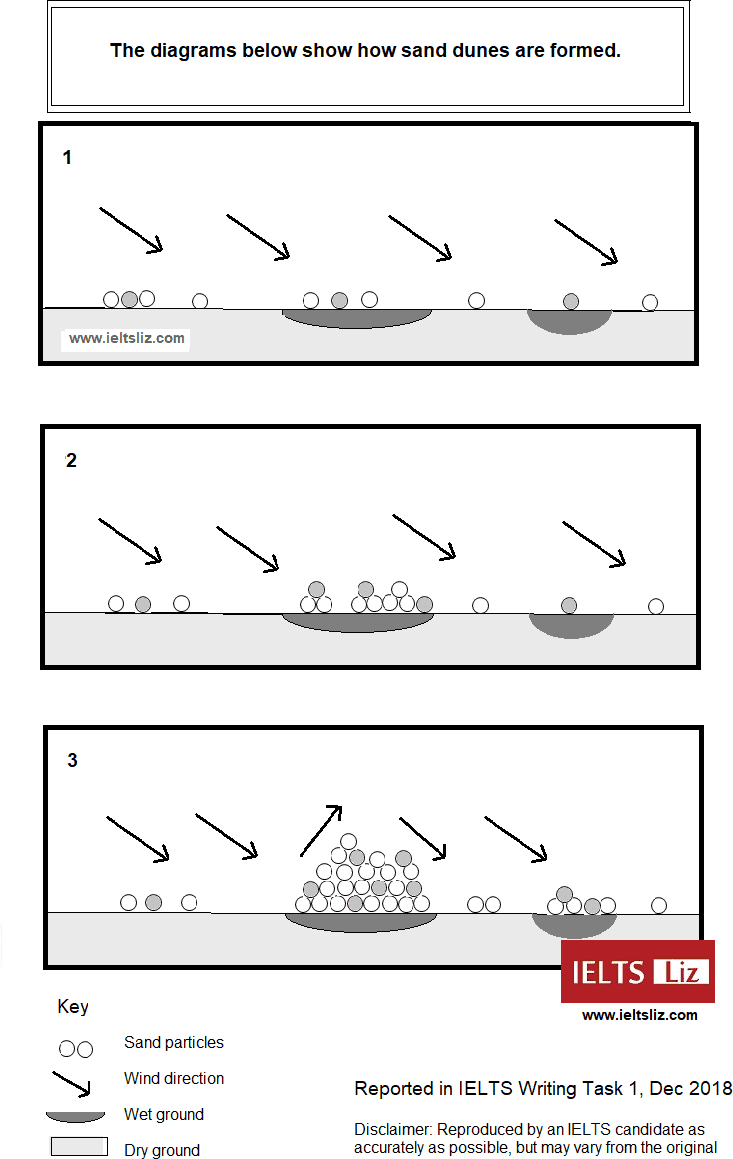You should spend about 40 minutes on this task.
The diagrams illustrate the formation of sand dunes from sand particles
Give reasons for your answer and include any relevant examples from your own knowledge or experience.
Write at least 250 words.

Sample Answer
The diagrams illustrate the formation of sand dunes from sand particles.
Overall, it is clear that the process consists of 3 stages, beginning with the action of wind blowing the sand particles, and ending with the formation of the sand dunes on the wet areas of ground.
In the first diagram, sand is blown by the wind over dry and wet ground. In the second diagram, sand particles continue to be carried by the wind, but now more sand particles collect over the wet ground, forming small separate piles.
Finally, the third diagram shows how particles of sand continue to gather over areas of wet ground, with the piles of sand increasing in size. When the piles are big enough, they form sand dunes.
These sand dunes change the direction of the wind by forcing it up one side of the dune and down the other side. The process is then repeated on the next area of wet ground, to form a series of sand dunes.
166 words
